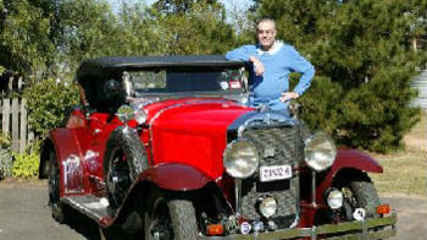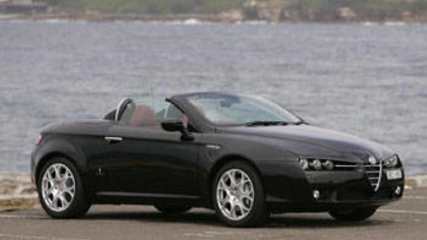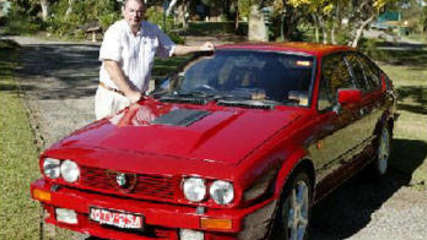Model A Ford an unbelievable cabrio
By Ashlee Pleffer · 15 Apr 2008
There was no “umming and ahhing” over the style, shape, colour or horsepower. He didn't waste time deliberating over what he wanted, because he'd been dreaming of his perfect car for a while.
The year was 1958. As a 17-year-old, Bradley got his licence on a Wednesday and two days later was the proud owner of a Model A Ford.
“I rode my pushbike up to get the car, put the push bike in the back and drove home,” he says.
Having been around people who owned veteran and vintage cars, Bradley knew it was a hobby upon which he had to embark.
And a few years later, along with another enthusiast, he formed the Model A Ford Club of NSW, and is still a member of today.
“Its been my passion, my life,” he says.
Bradley has owned some 10 Model A Fords during his 50-year love affair with the car, and currently owns a 1931 Model A Ford Cabriolet.
Next weekend will be like Christmas for Bradley and other Model A fans as more than 175 of these cars from all over Australia converge on Bathurst for the National Rally. It will be the largest gathering of Model A Fords in Australia and will run from Thursday to Sunday, celebrating the 80th Anniversary of the car.
Bradley says there has been a real resurgence of the Model A lately, with a great deal of enthusiasm and interest in the car both here and in the United States.
“The popularity of these in America is unbelievable,” he says. “There are 17,000 members (of the Model A Ford Club) in America and most of these guys have more than one car.”
Bradley has even made trips to the US to witness the national meets over there 11 times.
Unlike many other classic cars, Bradley says one of the great things about them is the easy access to spare parts.
“They're so reliable ... that's the big thing and it's a car I can get any part for,” he says.
“I can go and buy body panels, new wheels for a car that old — it's just incredible.”
Bradley came across this model 12 years ago, while he was arranging to pick up a Rolls-Royce that a friend had bought at an auction.
“It was sitting at a wrecker's yard under a car cover,” he says. “The owner not quite aware of what a special model he had. When he lifted the cover up, I couldn't believe it. The car is the only one in the country of this model.”
Bradley paid $20,000 for it, and says it was “in a very average condition.”
“It was an old restoration of 30-odd years or more. It was just bad,” he explains.
So he spent two years restoring the model and getting it up to scratch.
Having already restored two Model As in the past, both of which took about five years to complete, the 1931 Cabriolet was in good hands. And for its age, it still gets along at a fair clip.
“Even now you can get them out on the road and they go quite well for an 80-year-old motor car,” he says. Bradley's car is on restricted rego, and he mainly takes it out for club events.
It may not be the fastest vehicle on the road, with a top speed of about 80km/h, but it is a real looker and turns heads on the road. The Model A Ford took over from the Model T and was first released in Australia in 1928. More than 30,000 were sold through to 1930. Bradley's model was built in 1931, but was imported from the US by the previous owner and at the time of its release, wasn't officially for sale in Australia.
The US was the main market for the Model A Ford, with more than 4,320,000 sold. Another 900,000 were sold in other countries.
There were many different body styles to choose from including Roadsters, Tudor Sedans, Fordor Sedans, Sports Coupes, Business Coupes and Phaetons. They initially sold for about pound stg. 400 in Australia, and today Bradley says one in good condition like his would be worth about $30,000.
“The one I've got, there were only about six-and-a-half thousand made,” he says. And with the fold down roof as well as wind up windows, Bradley has the “best of both worlds.”
The passion for these cars, which he refers to as a “disease,” seems to be genetic.
“My sons have grown up with the cars and my youngest son got super involved, restoring one when he was still at high school — he finished 10 years later,” he says, proudly adding that it won the national concourse one year.
Bradley is very happy with his current Cabriolet model and won't be looking to sell anytime soon. But another version could always persuade him.
“The ones I've restored, I've kept for a while and only ever updated to something better,” he says. “I wouldn't sell this one. Not unless I stepped up the ladder to another rare model. I also have a Fordor now that I'm tinkering with.”
Snapshot
1931 Model A Ford cabriolet
Value when new: about pound stg. 400
Value now: average model about $15,000- $20,000; well-restored model about $30,000
Verdict: The Model A Ford is still attracting fans with classic looks and availability of parts.















